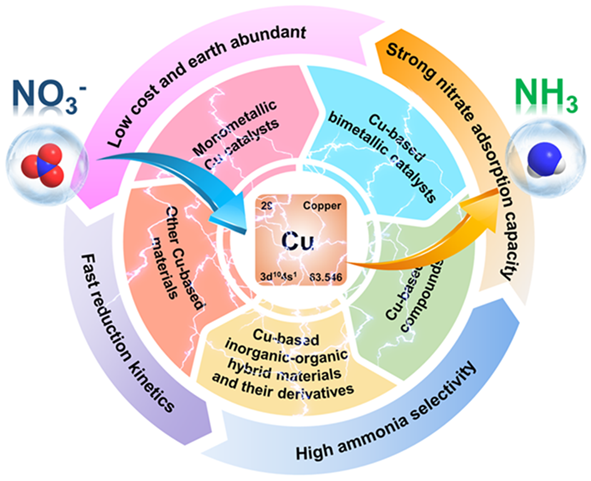
Cover Picture
Ultrathin ZnIn2S4 Nanosheets
Supported Metallic Ni3FeN for Photocatalytic Coupled Selective
Alcohol Oxidation and H2 Evolution
Mengqing Li, Weiliang Qi, Jiuyang Yu, Lijuan Shen, Xuhui Yang, Siqi Liu* and Min-Quan Yang*
Submit a ManuscriptRecent Advances of Cu-Based Materials for Electrochemical Nitrate Reduction to Ammonia
Tianlun Ren, Youwei Sheng, Mingzhen Wang, Kaili Ren, Lianlian Wang* and You Xu*
Chin. J. Struct. Chem. 2022, 41, 2212089-2212106 DOI: 10.14102/j.cnki.0254-5861.2022-0201
December 2, 2022
copper, nitrate reduction reaction, ammonia synthesis, electrocatalytic, catalyst design
ABSTRACT
The pollution of nitrate in
groundwater has become an environmental problem of general concern due to
adverse human and ecological impacts. Treatment of nitrate-rich wastewater is
of significance yet challenging for the conventional biological denitrification
processes. Electrocatalytic nitrate-to-ammonia conversion emerges as one of the
most promising avenues to remove environmentally harmful nitrate from various
types of wastewaters while simultaneously producing value-added ammonia.
Cu-based materials show great advantages in promoting selective
electroreduction of nitrate to ammonia in terms of high nitrate conversion
efficiency, ammonia selectivity and ammonia faradaic efficiency thanks to the
3d transition metal structure, low cost, high reserves, and excellent catalytic
performance of Cu. In this review, we comprehensively overview the most recent
advances in selective electrocatalytic nitrate-to-ammonia conversion using
Cu-based materials. Various kinds of Cu-based materials including monometallic
Cu catalysts, bimetallic Cu-based catalysts, Cu-based compounds, and Cu-based
inorganic-organic hybrid materials and their derivatives are discussed in
detail with emphasis on their structural and compositional features and
functional mechanisms in promoting nitrate-to-ammonia conversion. Finally, a
brief discussion on future directions, challenges and opportunities in this
field is also provided.






